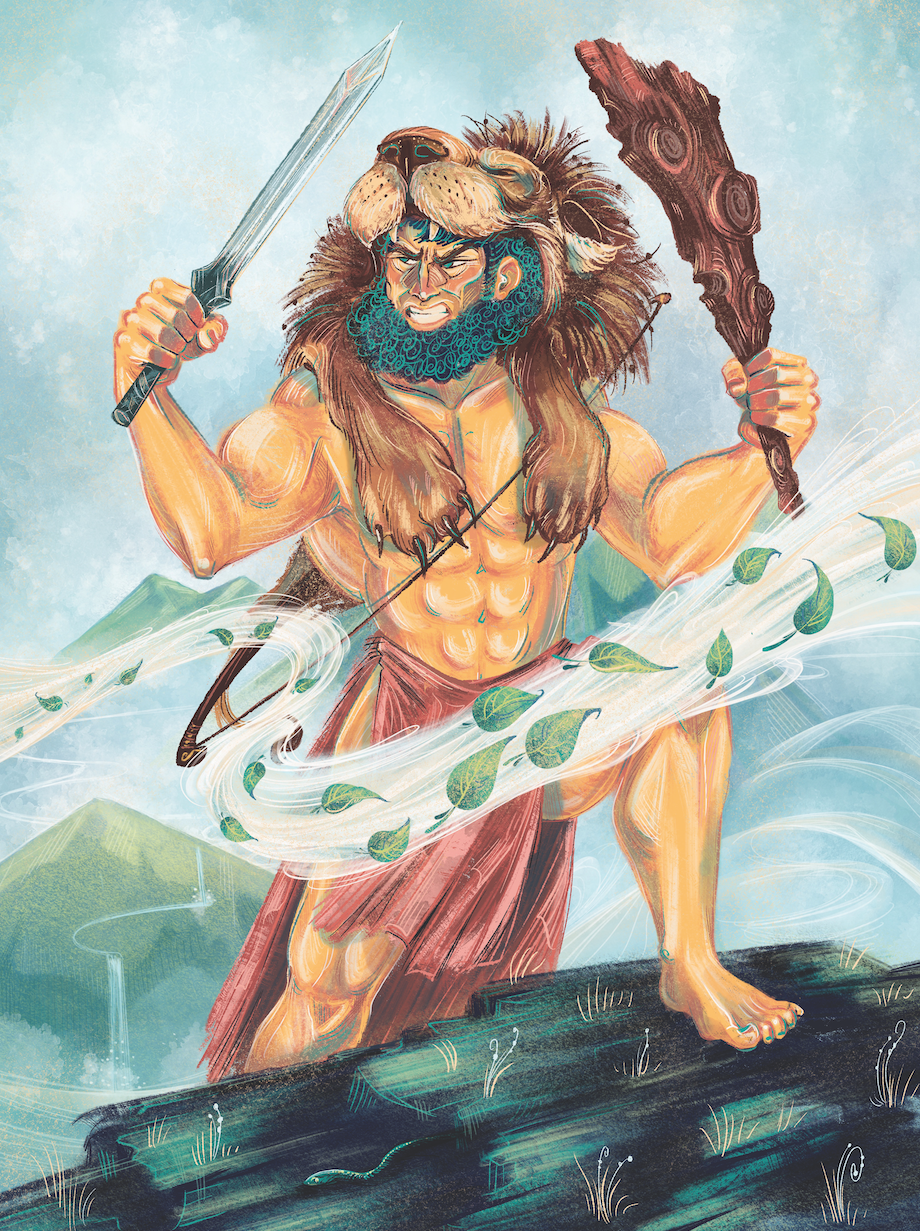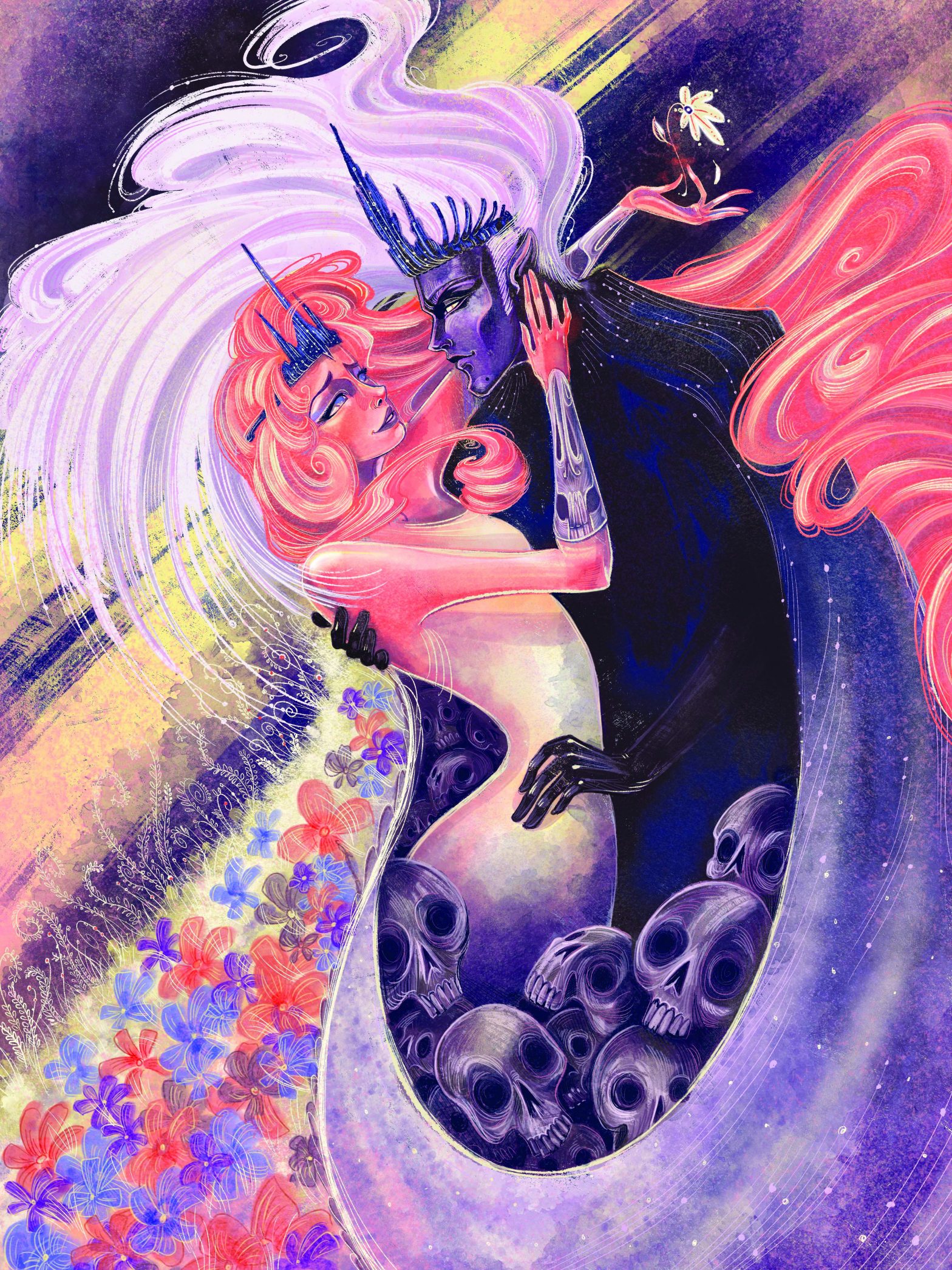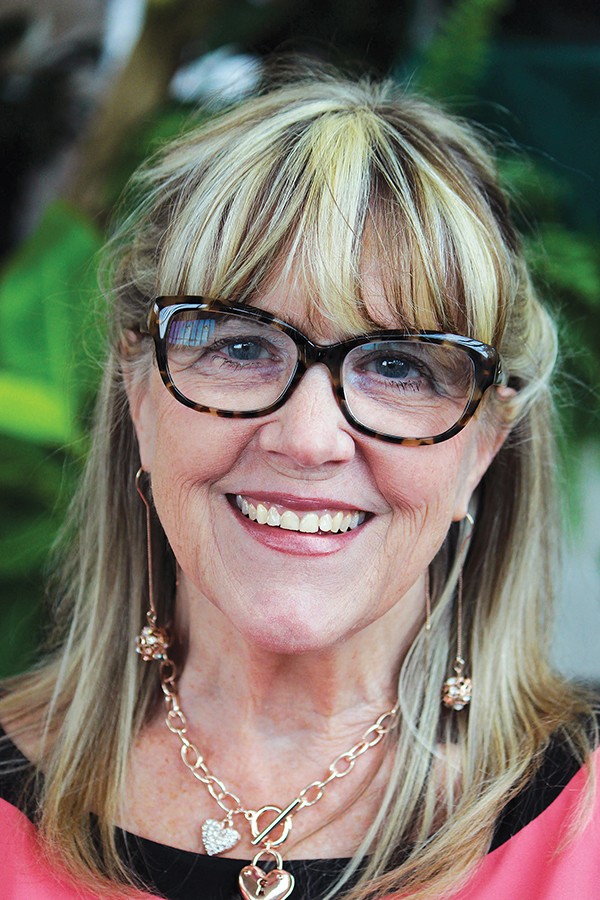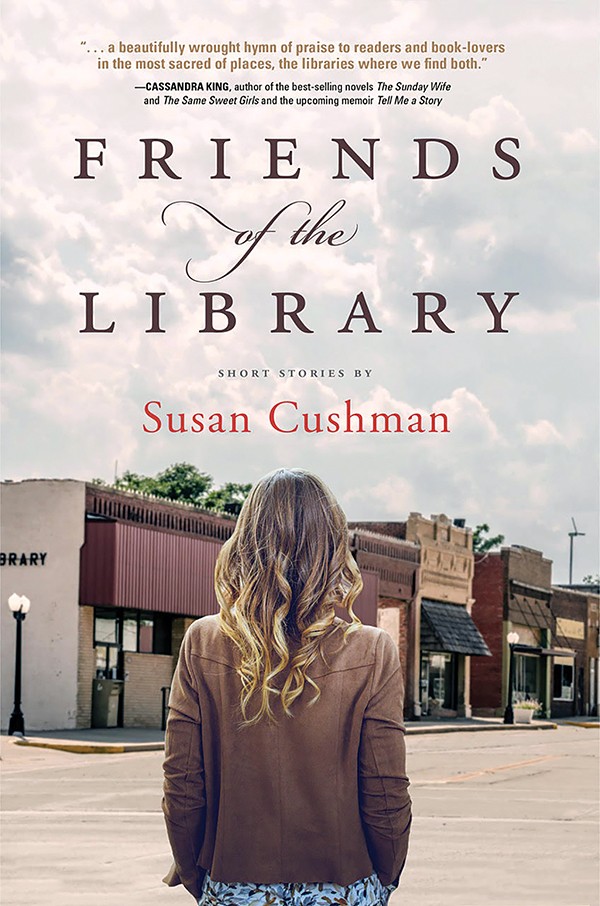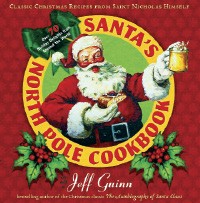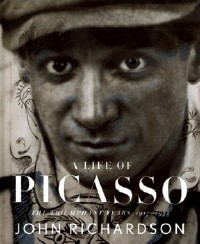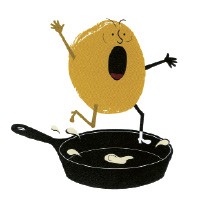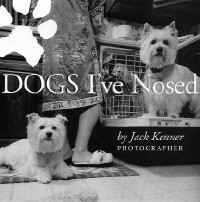Our Dumb World: Atlas of the Planet Earth (73rd Edition)
By the Editors of The Onion
Little, Brown, 240 pp., $27.99
It’s summertime, so let’s haul out the atlas and plan an exotic vacation in, say, South America. Argentina seems like a good choice, “a place where hundreds of former Nazis spend their final years reminiscing about the best way to cremate a Jew.”
Hmmm, maybe not Argentina. Okay, how about Brazil? “Boasting some of the sexiest people ever to be stabbed repeatedly at night,” we read, “Brazil is home to the most attractive victims of carjacking, robbery, and violent assault in the world.”
Yikes.
And Chile: “Preventing Argentina from enjoying the Pacific Ocean since 1918.” After all, the country is 3,000 miles long “and only 15 feet wide.” The detailed map points out such features as the “Paraguayan Taunting Tower.” Why taunt Paraguay? Because it’s “a nation widely known for not being widely known.”
Welcome to Our Dumb World, the wickedly twisted view of planet Earth by the editors of The Onion, the satirical newsweekly that — with its fake news reports — is the print and website version of The Daily Show. But with considerably more punch.
Saudi Arabia (“All Is Forbidden”) supposedly has laws that prohibit “laughing, frowning, smiling, and eating for one hour before beheadings.” To reinforce the horrible state of affairs for women in this nation, consider these two “facts”: “Leading cause of death for males: heart disease. Leading cause of death for females: males.”

Our Dumb World provides an overview of our planet — complete with each country’s profile, map, historical highlights, and even commentary on their flag. (The French tricolors “can be detached in case of emergency surrendering.”)
You can only handle Our Dumb World in chunks — a continent at a time, perhaps — but how else would you ever know the “Bono-Awareness Rating” for every country on Earth? — Michael Finger
Inventing Niagara: Beauty, Power, and Lies
By Ginger Strand
Simon & Schuster, 320 pp., $25
Niagara Falls has become a quaint piece of Americana, like baseball cards, station wagons, black-and-white televisions, and Marilyn Monroe. Ginger Strand, a self-described lover of hydroinfrastructure, brings history, tightrope walkers, power companies, Viagra, nostalgia, urban renewal, casinos, and — most important — herself to the story in Inventing Niagara.
“A waterfall, however beautiful or sublime, is not inherently entertaining, especially if you can’t ride it,” Strand writes.
How, then, to write a book about a waterfall that will sell? To my surprise, Strand hooked me by making herself a combination of skeptical and jaded tour guide, dogged historian, and funny and iconoclastic writer. She pesters librarians, hangs out with female tourists called the Red Hats, drags her boyfriends on spur-of-the-moment trips, and haunts the casinos and tacky tourist traps in the American and Canadian cities of Niagara Falls.

She recalls Blondin, the French tightrope walker who crossed the falls dozens of times in 1859 and 1860, carrying his manager on his shoulders, cooking an omelet, standing on his head, and turning a somersault. We also meet Annie Edson Taylor, a 63-year-old woman who successfully went over the falls in a barrel in 1901, thereby diminishing its aura of invincibility and earning herself a fair amount of derision.
The falls have been landscaped, hemmed in, blasted with dynamite, sculpted, and even had the water shut off completely on the American side in 1969 for some high-grade cosmetic surgery to enhance their majesty. And it’s true that the flow is adjusted by the power companies to correspond with peak tourism hours.
The invention of Niagara Falls includes the natural wonder that captivated Mark Twain and others, the landscape that stirred park planners such as Frederick Olmsted, the honeymoon haven of the 1940s and 1950s (the linguistic proximity to Viagra is not accidental) reinvented as a gay and lesbian wedding capital 50 years later, and the tacky tourist trap that finally gave way to casinos, first in Canada, then on the American side.
The casino owned by the Seneca Indians is the only major moneymaking business on the American side, drawing 5 million visitors a year and trumping its Canadian competitors with free drinks, craps, and smoking, which are banned across the border. But it hasn’t saved downtown Niagara Falls, New York, which is something of a case study in failed urban renewal.
This combination of natural wonder, civic uplift, and gambling-based tourism naturally made me think of Memphis and Tunica, including this passage on the “Free Niagara” environmental movement in the 19th century:
“Sublime landscapes were not simply places to be exploited, but sites of spiritual uplift, the pride of a nation and the birthright of its citizens. Such idealism would no doubt be laughed out of town today. But are we really ready to dispense with the notion that our connection to a place is somehow important beyond economic impact?” — John Branston
Dear American Airlines
By Jonathan Miles
Houghton Mifflin, 180 pp., $22
We’ve all been delayed at airports, but does anyone want to read a novel that opens, “Dear American Airlines, My name is Benjamin R. Ford and I am writing to request a refund in the amount of $392.68”?
In this case, the answer is a resounding yes. Dear American Airlines starts as a refund-request letter but becomes something more complex, more hilarious, and thankfully much more imaginative. Jonathan Miles portrays Benjamin R. Ford as a compellingly flawed man whose outrage is sparked by an interminable flight delay while he is en route to a reconciliation with his estranged daughter.
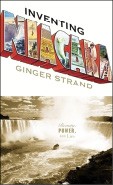
Bennie is an ex-everything: ex-poet disillusioned with the power of art to change the world; ex-alcoholic whose relentless drinking landed him repeatedly in the hospital; ex-father all but banished from his daughter’s life by her mother; and ex-husband to an academic who could only laugh through the divorce. As he scribbles in his notebook, his letter to American Airlines becomes an impromptu autobiography, created as much out of boredom as out of regret and all the more affecting for it.
Bennie’s cross-country flight is not simply a means of reuniting him with his daughter but a journey of self-rehabilitation into something resembling a human. So it’s no surprise that he describes O’Hare, where American Airlines has marooned him, as a personal purgatory: It represents salvation not simply delayed but thwarted indefinitely. Yet his humanity is entirely in the eye of the beholder — in this case, the reader. Despite his “toolbox of personality disorders,” Bennie is an endlessly sympathetic character: funny, condescending, self-loathing, and achingly self-aware. He is one of those literary characters whose true talent and appeal lie in his ability to make a mess of his life, which makes him an endlessly entertaining companion not only for such a long layover but for an epistolary novel.
In fact, as Bennie writes pages and pages to some unnamed American Airlines customer service representative, Miles manages to bend the rules of the epistolary genre, turning the reader into a character in Bennie’s story. Alone and forsaken, he writes to pass the time but more crucially to keep himself company, making the reader assume the role of confessor, priest, even friend. In this way, Dear American Airlines engages you with unexpected emotional force, making you wish this unlikely novel were twice as long as your next layover.
— Stephen Deusner
Rome 1960: The Olympics That ChangeD the World
By David Marannis
Simon & Schuster, 478 pp., $26.95
Here is a moment, reported by David Maraniss in his wonderful survey of the 1960 Olympics, that helps put in context what happened that year in Rome:
The flashy German sprinter Armin Hary had upset American hopefuls in the 100-meter dash and, in general, had summoned up comparisons to Jesse Owens’ equally remarkable triumph over his highly touted German counterparts in the Berlin Olympics of 1936.
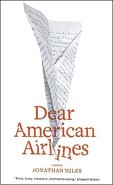
Those had been Hitler’s Olympics, remember — after which a legend grew that the German dictator had snubbed the great black American athlete by declining to congratulate him or shake his hand. Whatever the facts of that, there developed something of a mini-crisis 24 years later when Owens, inquiring through intermediaries after the 100-meter event, was rebuffed in his request for a meeting with Hary.
Tensions relaxed when the German sensation, having completed all his events, apologized for having been in a privacy zone earlier and agreed to meet Owens, whom, said Hary, he had long admired. With TV cameras grinding and flashbulbs popping, the German noticed a pack of cigarettes in the old champ’s shirt pocket. “You smoke? That’s no good. No good!” Hary said. “I’m old now. It’s all right,” Owens responded.
It’s now 48 years later, and we know it’s not all right to smoke, even for iconic ex-Olympians, but on the eve of the Beijing Olympics, it is helpful to be reminded of the political context in which these international mega-events always occur, in 2008 as in 1936 and as in 1960, the Olympic year reviewed so well by Marannis.
The Rome Olympics saw the first fame of one Cassius Clay, to be known as the immortal Muhammad Ali, and they witnessed, among numerous other circumstances chronicled here, the early crystallization of rivalry between chemically assisted Soviet-bloc athletes and the developing generation of black American track-and-field stars who were Jesse Owens writ large.
The prolific David Maraniss, like the late David Halberstam, is one of those rare writers at home with both sports and politics. Rome 1960 is a must-read for serious students of either. — Jackson Baker
Petite Anglaise
By Catherine Sanderson
Spiegel & Grau/Doubleday, 292 pp., $24.95
Petite Anglaise is the story of Catherine Sanderson, an Englishwoman who, since her first French lessons, is obsessed with France and vows to eventually make Paris her home. France was “a hook to hang my daydreams on — so alluring, so exotic, so tantalizingly close,” Sanderson writes.
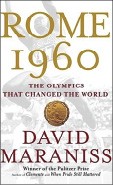
After graduation, she acquired a job as an English assistante to French students. And though she was living in France, she felt that she lived among the French, not with them. So Sanderson sought French friends and a French boyfriend, and eventually she found “Mr. Frog,” a Frenchman who fathered her child, “Tadpole.”
But family life became tedious, and busy work schedules slowly picked apart her relationship and her love affair with Paris. Then, one day at her secretarial job, she ran across Belle de Jour, the blog of a London call girl. This was the first that Sanderson had heard of blogging, and the idea of an anonymous online diary intrigued her. Thus was born Petite Anglaise.
Petite Anglaise is “a small, cute English girl,” and she stands for everything Sanderson wanted her life to be: “an English girl who has been translated into French.” What began as a simple account of an English girl uprooted to France, however, became an outlet for more intimate details of her life, and with the click of a mouse, Sanderson’s world turned upside down, the line between her life and Petite’s blurred with every keystroke.
Petite’s readers share her highs and lows, her waning relationship with Mr. Frog, and her struggle to find happiness. Through her words, the City of Light comes to life, and her adventures become ours. The best part, though, is that the story of Petite Anglaise doesn’t end on the last page of Petite Anglaise. Sanderson continues to blog on the website PetiteAnglaise.com, which boasts over 100,000 visitors per month. — Shara Clark
The Enchantress of Florence
By Salman Rushdie
Random House, 355 pp., $26
If you do a Venn diagram with one circle representing the writing of Salman Rushdie and the other that of Arturo Pérez-Reverte, Rushdie’s new novel, The Enchantress of Florence, would fit nicely inside the intersection of the two sets.
No question, Rushdie’s name is on the book’s spine. And the novel’s gorgeous language, ethnic tensions, and emotional scope are what we’ve come to expect of him. But the book’s subject matter and antiquarian interests are the stuff of a Pérez-Reverte historical potboiler.
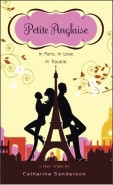
The Enchantress of Florence is a globe-encompassing generational tale, with action that spans the 16th century. In it, a mysterious Florentine tale-teller has trekked thousands of miles to the city of Sikri in India to gain a personal audience with the Mughal ruler Akbar the Great. The guts of the novel are the story that the Italian tells Akbar — a story about three friends in Florence who lived 50 years earlier, one of whom is far too famous for me to name here. Rushdie steeps Florence (in the grips of the High Renaissance) and Sikri (under the aegis of its deity/sovereign) in the primordial soup of his imagination, brewing a potion that compels you to believe that the author’s magical realism is, in fact, historically accurate.
One primary difference between Pérez-Reverte and Rushdie is how each measures the human condition: For the former, the glass is half-empty. For the latter, it’s half-full with a poisoned wine; the world will kill you in the end, but it’s lovely going down.
The Enchantress of Florence is a page-turner with rich rewards. If the magic has worn off by the book’s end, well, that seems on purpose too. — Greg Akers
The Girl on the Fridge
By Etgar Keret, translated by Miriam Shlesinger and Sondra Silverston
Farrar, Straus & Giroux, 171 pp., $12 (paperback)
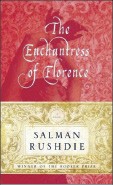
Talk about value! Talk about economy! There are 46 stories in Etgar Keret’s The Girl on the Fridge, a slim collection featuring several early stories by one of Israel’s most celebrated contemporary writers. Good news is, at least 35 of these stories are well worth the effort it takes to read them. Of that 35, a dozen or so are borderline brilliant, and in an impressive handful, Keret says more in a few dozen words than most gifted writers can say in a matched set of awfully long trilogies. Even his annoying, unfinished-feeling sketches go by so quickly that there’s not enough time to get mad at them.
The Nimrod Flipout, Keret’s previous collection in English, was well received. American cinephiles may also recognize him as the inspiration for the quirky 2006 anti-horror film Wristcutters: A Love Story. But The Girl on the Fridge feels like Keret distilled.
Keret’s words never fail to make an impression, though his miniatures seldom add up to a story in any conventional sense. Instead, he takes revealing, darkly comic snapshots of contradiction, paradox, dilemma, and desperation, moving effortlessly between lean Carveresque realism, the painterly prose of Italo Calvino, and the stark domestic absurdity pioneered by Eugène Ionesco.
Each story, whether it’s about a Jew who’s beaten for not hating Arabs enough or a neglected wife who superglues herself to the ceiling, plays out like a cheap but irresistible magic trick performed by a birthday-party magician who is as surprised as anybody when dead babies start popping out of his hat instead of rabbits or colored scarves.
Appropriately The Girl on the Fridge, which is unquestionably a mixed bag, leaves the reader wanting to see much more from Etgar Keret. And also a little less.
— Chris Davis
The Garden of Last Days
Andre Dubus III
Norton, 535 pp., $24.95
Andre Dubus III credits his ability to write his controversial new novel, The Garden of Last Days, to writer Larry Brown. Dubus even dedicates the novel to Brown for professional and personal reasons, saying he couldn’t have written the book if he hadn’t known Brown’s work.
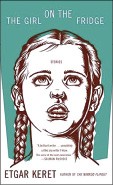
The Garden of Last Days, a story that began with an image of a wad of cash on a dresser, reveals a gritty, down-and-out world. The cash, Dubus realized, didn’t belong to a waiter or waitress but to a dancer in a men’s club. What started as a short story about a dancer coalesced with the news that some of the 9/11 terrorists frequented strip clubs in Florida. Dubus wondered what it would be like to be a woman and possess that “blood money,” but he also resisted inhabiting the character of a terrorist as the narrative demanded.
In the end, April, who dances as “Spring” at the “Puma Club for Men,” and Bassam Al-Jizani are just two of at least seven interwoven points of view. One of the more understated is the Puma bouncer, Lonnie, who senses microcosmic eruptions of potential trouble he calls “pockets.” Night after night he squelches those pockets, and when he learns of the 9/11 attacks, “it was like the whole club had erupted into a hundred open pockets, yet there was nowhere for him to go, no one to defend.”
Critics who contend that Dubus fails to offer new insight into terrorists miss the point of this absorbing novel. If anything, The Garden of Last Days is flawed by the author’s immersion in their religion and psyche, which borders on redundancy. Still, the novel succeeds because the terrorists are only one of several compelling and well-realized narratives masterfully strung together and imagined with the kind of realism Dubus shares with the man he came to know during the last years of his life: Larry Brown. — Lisa C. Hickman
The Turnaround
By George Pelecanos
Little, Brown, 294 pp., $24.99
The Turnaround is TV in book form: straight narrative, simple plot, characters broadly brushed. Author George Pelecanos locates the story in Washington, D.C., where, in the summer of ’72, a trio of bored, stoned, drunk, white teenagers drive into a black neighborhood and hurl a Hostess fruit pie and a racial epithet at their opposite number: three African-American youths strolling through the ‘hood.
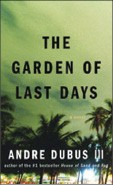
The white boys speed off, only to hit a dead end. One flees into the nearby woods to safety. The other two turn back the way they came to face the victims of their drive-by shouting. The white boys plead for forgiveness. The black boys stomp one and shoot and kill the other.
The story picks up the four survivors 35 years later, a time that finds them still dealing with the scars from “the incident.” They reunite, and a temporarily successful drug heist, a failed extortion plot, personal redemption, and street and poetic justice ensue.
Pelecanos is an accomplished and decorated writer. His work on the HBO series The Wire garnered an Emmy nomination, and he brought home two Los Angeles Times book awards for his previous novel, The Night Gardener.
The Turnaround is an engaging, tightly written story. It offers a few little surprises and pulse-quickening scenes of violence. As one of Pelecanos’ characters might say, though (among the steady diet of clichés that bloat the dialogue), it is what it is: pulp pop, neither at its finest, nor its flimsiest. The Turnaround is fun but not essential reading — unless you’ve killed your cable for the summer to help meet those cooling costs and need your crime drama. — Preston Lauterbach
Fractured
By Karin Slaughter
Delacorte Press, 388 pp., $25
The six-page prologue to Karin Slaughter’s Fractured is so graphic and exhausting that some readers might be tempted to stop before the going gets rougher. However, the main text is free of violence, its thrust being the analysis of a brutal crime involving three teenagers in a ritzy section of metropolitan Atlanta.
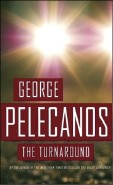
After a false start by the Atlanta Police Department, Detective Will Trent of the Georgia Bureau of Investigation is placed in charge of the case. His first assistant is Detective Faith Mitchell, who is especially motivated to keep an eye on the buttoned-down but eccentric agent.
Although Slaughter enthusiasts place her in the company of Patricia Cornwell, her characters wryly acknowledge that the technology available to them nowhere near approaches the levels made popular elsewhere. Slaughter’s characters rely on observation and interrogation, and, occasionally, they parody the genre they inhabit. While waiting for lab results related to the case, for example, the lead investigators rummage through a stack of home pregnancy kits to determine if Will’s girlfriend is keeping a secret from him.
Professional competition, personal problems, and investigative techniques aside, Slaughter and her characters take their mission seriously. Lives are at stake. The quality of those lives is under scrutiny. And there is reason to believe that the investigators’ partnership will continue. With names like Will and Faith, no doubt they embody the impulse to improve the lot of victims and families Fractured by crime.
— Linda Baker
The Other
By David Guterson
Knopf, 256 pp., $24.95
“I was also confronting a truly onerous tedium. … I felt possessed by the dogged futility,” says the narrator in David Guterson’s new novel, The Other. That narrator, Neil Countryman, is describing how he felt when he and his best friend, John William Barry, used pick axes to carve out a cave. Unfortunately, the scene is analogous to reading The Other.
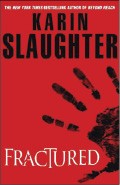
The book is about two characters: one who rebels against the “hypocrisy of society”; another who lives happily as a teacher. Yet neither of these characters feels alive, and consequently, the reader doesn’t care what happens to them.
Guterson apparently believes that John William is intrinsically fascinating. One character even attempts to get a screenplay developed about John Williams’ nutty social rebelliousness. But why bother? We’ve all known a John William who had such high standards, walked around on a soapbox, and was generally obnoxious.
What’s unique about John William is that he continues to pursue his ideals of “pure” living even after most of the counterculture kids would have gotten a job and developed a sense of humor. John William never does. He moves to the woods of Washington state, lives in a cave, and dies a hermit. But he doesn’t actually do anything except chip away at that limestone, the same way the reader keeps chipping away at The Other. At least John William gets a cave out of his work.
Over the course of the novel, all the reader feels is indifference toward these characters. Neil Countryman, for example: hilarious name, right? He keeps a journal and writes down every minute detail — like the number of cows he passes by. Guterson litters the novel with details like this, which drags the pace of the novel and fogs any characterizations.
But it’s not that The Other is terrible. While some passages are wonderfully written, others are tedious and you wonder why no one edited them out. There’s just no passion to pull you in. The Other isn’t good, but it isn’t bad. Worse than bad, it’s forgettable.
— Alicia Buxton
Home Girl: Building a Dream House
on a Lawless Block
By Judith Matloff
Random House, 286 pp., $25
Real estate in New York is notoriously cost-prohibitive. Which is why, when foreign correspondent Judith Matloff and her husband decided to move to New York, they bought a former crack house in West Harlem, the “ground zero” of the country’s wholesale cocaine trade.

Well, that wasn’t the only reason.
After almost 20 years of covering events in Rwanda, Guatemala, Sudan, and Chechnya, Matloff decided she wanted to live “somewhere civilized.” She and her husband came up with a list of criteria: They wanted a city where they could both find good jobs, a house with an extra bedroom for visiting friends, a dining room big enough for their beloved 10-foot pine table, and a place with “at least one shooting a week on the street corner” to keep things from being too dull.
Matloff tells of run-ins with the muchachos — the drug dealers who come out in full force every morning at 11 a.m. — and Salami, the crack addict who squats next door and vows early on that she will be sorry.
But the horrors outside are only the beginning. Home Girl is also a memoir of a rehab, as the couple struggles to begin a family while fixing up their limestone Romanesque Revival. Broken stairs have to be replaced, lead paint has to be removed, and whole rooms have to be gutted. While replacing a window in the kitchen, an entire wall collapses, leaving them vulnerable to their dangerous neighborhood.
Matloff struggles with buyer’s remorse, but as the house gets better, so does the neighborhood — with just as much effort. The city’s cleanup is led by New York mayor Michael Bloomberg, and even that comes with its own problems.
In short, Home Girl is the story of turning a house — and its surrounding community — into a home. — Mary Cashiola
Up for Renewal: What Magazines Taught Me About Love, Sex, and Starting Over
By Cathy Alter
Atria Books, 320 pp., $24
In her late 30s, Cathy Alter was divorced, bored by her job, drinking and smoking way too much, having a disastrous office affair, and one of her dearest friends told her, “I don’t think I can be around you any longer.” Alter’s response? “I can’t be around me.”
So, Alter drew up a list of things she wanted different about her life, and something about that list struck her as familiar: Each point sounded like the tagline from a woman’s magazine. And while she acknowledges in her introduction to Up for Renewal to finding her task a bit silly, if not anti-feminist, she bought those magazines with a vow that she would devote one month each to improving one aspect of herself — career, home, body, relationships, etc. — for the following year.
And she did. Sort of. And more. The exercise tips she abandoned in favor of a personal trainer. The recipes she followed came with successes and a major flop. Spicing up her sex life with gee-gaws didn’t fly, but the laughter it created brought her and her lover closer. By the end of the year, Alter was content and married. Where some might see these articles in these same magazines as propagating self-loathing, Alter saw them as possibility, a vehicle of change.
The book is intensely personal. Alter reveals herself, warts and all. But no matter how witty Alter can be (and she’s witty in spades), the book reeks of a clever pitch to a publisher. Perhaps if she had followed the magazine advice to the letter, she would have come up with true comedy and maybe some pathos. Instead, it’s a bit weird for readers to be so privy to Alter’s not-so-unordinary life.
Up for Renewal? Save your 24 bucks and buy some magazines. — Susan Ellis
Essential Cinema: On the Necessity of Film Canons
By Jonathan Rosenbaum
Johns Hopkins University Press, 449 pp., $25 (paperback)
In some ways, Jonathan Rosenbaum — longtime film critic for the alternative newsweekly the Chicago Reader who retired from that position earlier this year — is to American film discussion what Ralph Nader or Noam Chomsky are to American political discourse: He’s a major voice committed to combating the nexus of studio marketing, corporate-media publicity, box-office receipts, Oscar telecasts, and the American Film Institute lists, which, Rosenbaum argues, both drive and limit the discussion of cinema in this country.
That said, Essential Cinema — an updated edition of a book that first appeared in 2004 — doesn’t exactly do what its title claims. Other than an introduction that lays out Rosenbaum’s philosophy about film canons and a personal canon (expanded and further annotated from the previous edition) of more than 1,000 (!) films at the back of the book, Essential Cinema is just a collection of previously published reviews.
Rosenbaum dealt with the topic of the title better in his previous book, Movie Wars, which effectively and appropriately excoriated the AFI’s list of the greatest American movies. Movie Wars was a polemic that might brand Rosenbaum a crank or angry prophet, depending on your perspective. Essential Cinema, by contrast, is a chance to enjoy a bunch of reviews from one of the best long-form film critics on the planet, including brilliantly detailed explications of films such as M, Rear Window, and Eyes Wide Shut.
But caveat emptor: Rosenbaum is the rare American film critic who approaches the medium from a global perspective. Only about a third of the material in Essential Cinema covers American films. — Chris Herrington
Cuisines of the Axis of Evil and Other Irritating States
By Chris Fair
The Lyons Press, 336 pp., $24.95
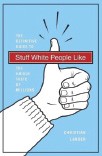
It’s not every day that you stumble upon a food writer as daring as Chris Fair, whose Cuisines of the Axis of Evil and Other Irritating States easily commingles brutal stories about bloody war, bloody murder, and bloody revenge in the bloody desert with an explosive collection of fabulous recipes that will make your house smell better than a virgin-stocked kitchen in heaven’s high-rent district. Dedicated to those who hunger for peace, justice, and security and aptly subtitled “A Dinner Party Approach to International Relations,” Fair introduces his readers to culinary concepts like a Palestinian upside-down meat and vegetable casserole and a chicken, walnut, and pomegranate stew from those baddies in Iran.
Critics may compare Fair to Lord Chamberlain and say that his cardamom-spiced Arabic coffee is nothing but culinary appeasement. But one mustn’t be too swift to judge and neglect an all-American chapter devoted to roasted sweet potatoes in sage butter and apple pear crumble.
There are some unsavory regimes out there, but diplomacy doesn’t have to be completely unpalatable. — Chris Davis
How Does Your Garden Grow?
In this world of shopping-center parking lots and factories, the landscape is starting to look a little, um, gray. But urban areas don’t have to be all asphalt and brick facades.
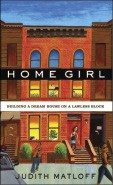
Enter guerrilla gardening. Much like the warfare of the same name, this new form of urban gardening utilizes mobile and covert tactics. For example, a green-thumbed guy may plant a few zinnias in an abandoned streetside planter under cover of night. Or a flower-loving girl might toss wildflower seeds from her car window as she passes a patch of grass in an industrial area.
Richard Reynolds’ On Guerrilla Gardening (Bloomsbury, $25.99) serves as a colorful guide for prospective urban landscape artists — with everything from a history of the guerilla-gardening movement, to the “arsenal” (a plant guide), to how to deal with garden pests and litter.
— Bianca Phillips
White like me
Let’s face it. White people have a nasty history of oppressing other races. And there’s so many of us that we can’t identify with any one “white” culture.

Or can we? Christian Lander’s tongue-in-cheek The Definitive Guide to Stuff White People Like (Random House, $14), based on Lander’s popular blog (StuffWhitePeopleLike.com), features 150 people, places, and things that define whiteness, like David Sedaris (#25), ’80s nights (#29), and Whole Foods (#48).
Lander’s book should actually be titled The Definitive Guide to Stuff White Middle-Class Liberal American (and Maybe Some Canadian) People Like. Though I’m a tried-and true whitey by Lander’s standard (i.e., I dream of owning a Prius, love recycling, and think music piracy is just my way of sticking it to the man), I’m also a tried-and-true left-of-left-of-center liberal.
I know a few white conservatives, though, who would count as black if they took Lander’s “How White Are You?” quiz. For example, I doubt you’ll find any blue-collar Republicans sporting Che Guevara’s (#113) mug on a vintage-style, organic cotton T-shirt (#84).
But Lander’s book is a must-read for any Barack Obama-supporting (#8), sushi-loving (#42), Apple computer-promoting (#40) liberal. Your level of whiteness may surprise you and make you laugh in spite of your white self. — Bianca Phillips

